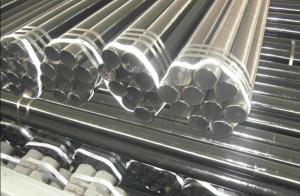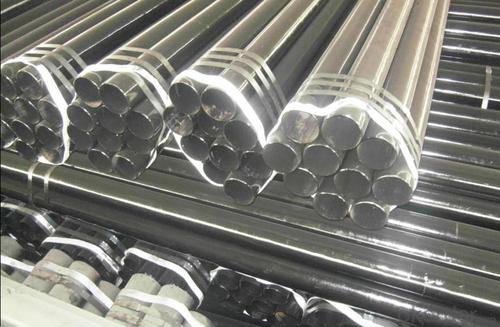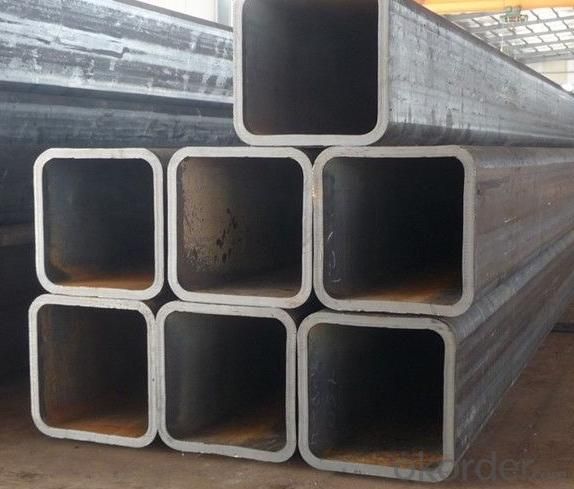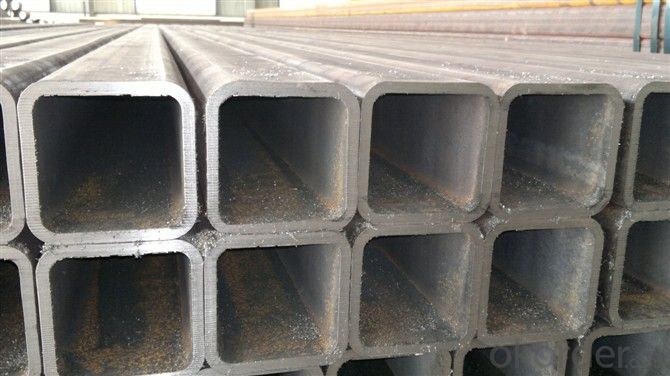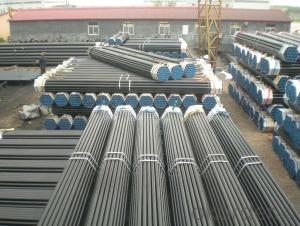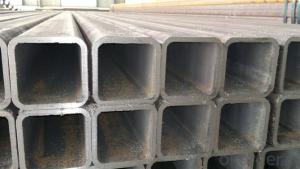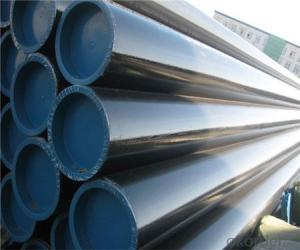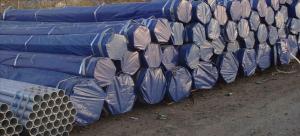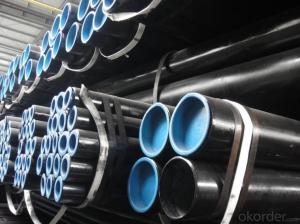Black Carbon Steel Seamless Pipe
- Loading Port:
- China Main Port
- Payment Terms:
- TT or LC
- Min Order Qty:
- 25 m.t.
- Supply Capability:
- 9000 m.t./month
OKorder Service Pledge
OKorder Financial Service
You Might Also Like
1、Structure of Seamless Pipe ASTM APL106:
Seamless pipe is formed by drawing a solid billet over a piercing rod to create the hollow shell. As the manufacturing process does not include any welding, seamless pipes are perceived to be stronger and more reliable. We company is professional to provide these serious of pipes and what we can give you is not only in good sprice, the most important is we can provide you good quality.
2、Main Features of theSeamless Pipe ASTM APL106:
• Higher manufacturing accuracy
• Higher strength
• Smalerl inertia resistance
• Stronger heat dissipation ability
3、Seamless Pipe ASTM APL106 Specification:
Standard | GB, DIN, ASTM ASTM A106-2006, ASTM A53-2007 |
Grade | 10#-45#, 16Mn 10#, 20#, 45#, 16Mn |
Thickness | 8 - 33 mm |
Section Shape | Round |
Outer Diameter | 133 - 219 mm |
Place of Origin | Shandong, China (Mainland) |
Secondary Or Not | Non-secondary |
Application | Hydraulic Pipe |
Technique | Cold Drawn |
Certification | API |
Surface Treatment | factory state or painted black |
Special Pipe | API Pipe |
Alloy Or Not | Non-alloy |
Length | 5-12M |
Outer Diameter | 21.3-610mm |
Grade | 20#, 45#, Q345, API J55, API K55, API L80, API N80, API P110, A53B |
Standard | ASME, ASTM |
1) Material:20#(ASTM A 106/A53 GRB.API5LGRB,GB),45#,16Mn,10#.
2) Specification range:OD:21.3-610mm,WT:6-70mm,length:6-12m or according to the requirement of clients.
3) Excutive standards:GB,ASME API5L.ASTM A 106/A53,Despite of the above standards,we can also supply seamless steel pipe with standard of DIN,JIS,and so on,and also develop new products according to the requirements of our clients!
4) Surface:black lacquered,varnish coating or galvanized.
5) Ends:Beveled or square cut,plastic capped,painted.
6) Packing:bundles wrapped with strong steel strip,seaworthy packing.
4、Packaging & Delivery
Packaging Details: | seaworthy package,bundles wrapped with strong steel strip |
Delivery Detail: | 15-30days after received 30%TT |
5、FAQ of Seamless Pipe ASTM APL106:
①How is the quality of your products?
Our products are manufactured strictly according to national and internaional standard, and we take a test
on every pipe before delivered out. If you want see our quality certifications and all kinds of testing report, please just ask us for it.
Guaranteed: If products’ quality don’t accord to discription as we give or the promise before you place order, we promise 100% refund.
②How about price?
We company is professional to provide these serious of pipes and what we can give you is not only in good sprice, the most important is we can provide you good quality.
③Why should you chose us?
Chose happens because of quality, then price, We can give you both.Additionally, we can also offer professional products inquiry, products knowledge train(for agents), smooth goods delivery, exellent customer solution proposals.Our service formula: good quality+good price+good service=customer’s trust
SGS test is available, customer inspection before shipping is welcome, third party inspection is no problem.
6、Seamless Pipe ASTM APL106 Images:
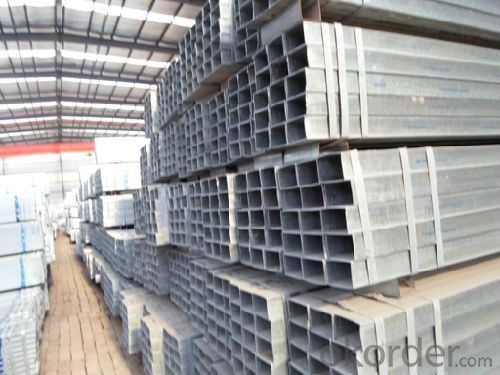
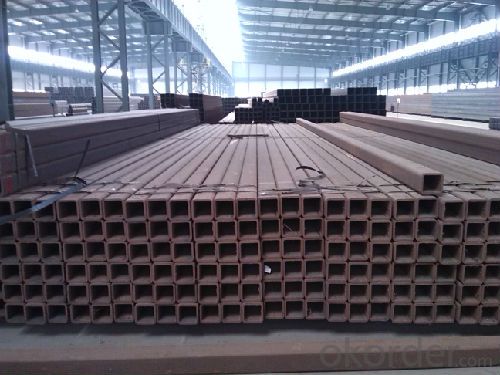
- Q: Can steel pipes be used for underground sewerage systems?
- Yes, steel pipes can be used for underground sewerage systems. Steel pipes are strong and durable, making them suitable for carrying sewage underground. They have a high resistance to corrosion and can withstand the pressure and load of the ground above. Steel pipes also have a long lifespan and are resistant to environmental factors such as moisture, chemicals, and temperature fluctuations. Additionally, steel pipes can be easily welded, making installation and repairs more convenient. However, it is important to ensure that the steel pipes are properly coated or lined to prevent corrosion and to comply with local regulations and standards for underground sewerage systems.
- Q: Seamless steel pipe is how to do it?
- Round tube has some limitations, such as in the plane bending conditions, the tube is better than square and rectangular tube bending strength, and some agricultural machinery skeleton, steel, wood furniture, commonly used square, rectangular tube. According to different purposes, other sections of special-shaped steel pipe are needed.
- Q: What are the common methods for repairing steel pipes?
- Depending on the nature and extent of the damage, there are several common methods available for repairing steel pipes. One method frequently used is welding. This technique involves melting the damaged area and fusing it with a new piece of steel. Welding is typically employed for small cracks or holes in the pipe. Different welding techniques, such as shielded metal arc welding (SMAW), gas metal arc welding (GMAW), or tungsten inert gas (TIG) welding, can be utilized. Another option is pipe wrapping or bandaging. This method entails wrapping a layer of adhesive tape or resin-soaked fiberglass around the damaged section of the pipe. It is suitable for addressing small leaks or corrosion spots and serves as a temporary solution until a more permanent fix can be implemented. If the damage is extensive or the pipe suffers severe corrosion, pipe lining or relining may be necessary. This involves inserting a new pipe liner inside the existing one, effectively creating a new pipe within the old one. Various materials, such as epoxy, polyethylene, or cured-in-place pipe (CIPP), can be used for this method. Pipe lining is commonly employed for larger diameter pipes or when replacement is not feasible. In some instances, minor leaks or cracks can be repaired using pipe clamps or sleeves. These devices are designed to be clamped around the damaged section and can provide either a temporary or permanent solution, depending on the severity of the damage. Ultimately, the choice of repair method depends on factors such as the extent of the damage, accessibility of the damaged area, budget constraints, and the required long-term durability. It is advisable to consult with a professional pipe repair specialist to assess the specific situation and determine the most suitable method for repairing steel pipes.
- Q: Are steel pipes fire resistant?
- Yes, steel pipes are considered fire resistant due to their high melting point and ability to withstand extreme heat.
- Q: What are the different methods of welding steel pipes?
- There are several methods of welding steel pipes, including arc welding, TIG (tungsten inert gas) welding, MIG (metal inert gas) welding, and oxy-fuel welding. Each method has its own advantages and applications, depending on factors such as the thickness of the steel, the desired strength of the weld, and the available equipment.
- Q: What is the difference between hot-dipped galvanized and electro-galvanized steel pipes?
- Hot-dipped galvanized steel pipes are coated with a thick layer of zinc by immersing them in a bath of molten zinc, creating a durable and corrosion-resistant coating. On the other hand, electro-galvanized steel pipes are coated with a thinner layer of zinc through an electroplating process, offering a more economical and aesthetically pleasing option.
- Q: How to make the steel pipe spray paint is not easy to fall off?
- You're not usually advised to do it yourself, because you can't do it yourself. General powder coating, spray before the treatment is very strict, to be high temperature baking, and their spraying are dry paint, it does not add hardening agent, that is, the surface dry, but not hard, not wear-resistant. So don't scrape off the paint, or you'll look good after spraying, and it will be ugly in a few days,.If you really like to look good, you can buy some stickers back to paste, without affecting the appearance..
- Q: What are the common methods for inspecting the integrity of steel pipes?
- To inspect the integrity of steel pipes, various methods are employed. These methods play a vital role in identifying any faults or weaknesses in the pipes that could jeopardize their structural soundness and potentially result in failures or leaks. 1. Visual Inspection: This method involves a visual examination of the external surface of the steel pipe by an inspector. The purpose is to spot any signs of damage, such as corrosion, cracks, or deformities. Although it is a quick and cost-effective approach, it may not be sufficient to detect internal defects. 2. Ultrasonic Testing (UT): UT is a non-destructive testing method that utilizes high-frequency sound waves to identify flaws in steel pipes. A transducer emits ultrasonic waves into the pipe, and any waves that bounce back are analyzed to detect defects like cracks or voids. UT is effective for inspecting both the internal and external aspects of the pipe and can provide precise measurements of defect size and location. 3. Magnetic Particle Inspection (MPI): MPI is primarily employed to detect surface or nearby surface defects in ferromagnetic materials like steel. Magnetic particles are applied to the pipe's surface, and if there is a defect, these particles will gather around it, creating a visible indication. MPI is particularly useful in identifying cracks and other discontinuities that may not be easily visible to the naked eye. 4. Radiographic Testing (RT): RT involves the use of X-rays or gamma rays to examine the internal structure of steel pipes. These rays pass through the material, and an image is recorded on a radiographic film or a digital detector. This method is effective in detecting internal defects such as cracks, voids, or inclusions. However, it necessitates proper safety measures due to the use of radiation. 5. Eddy Current Testing (ECT): ECT is a non-destructive testing method that relies on electromagnetic induction to assess the integrity of steel pipes. An alternating current is passed through a probe, generating an electromagnetic field. Any alterations in the material's electrical conductivity or magnetic permeability caused by defects are detected by the probe, providing information about the pipe's condition. These represent some of the commonly used techniques for inspecting the integrity of steel pipes. Each method possesses its own advantages and limitations, and the choice of inspection method depends on factors such as the type of defect to be identified, access to the pipe, and budgetary considerations. Regular inspection and maintenance using these methods are crucial to ensure the secure and dependable operation of steel pipe systems.
- Q: How are steel pipes used in the water treatment industry?
- Steel pipes are widely used in the water treatment industry for various applications. They are commonly used as conduits to transport water from different sources to treatment plants and distribution systems. Steel pipes are also employed in the construction of water treatment facilities, including filtration units, pumping stations, and storage tanks. Additionally, steel pipes are utilized in the distribution network to deliver treated water to consumers. The durability and strength of steel make it an ideal choice for handling the high pressure and corrosive conditions often present in water treatment processes.
- Q: What are the different types of steel pipe coatings for corrosive environments?
- There are several types of steel pipe coatings used for corrosive environments, including epoxy coatings, polyethylene coatings, fusion bonded epoxy coatings, and zinc coatings. These coatings provide a protective barrier against corrosion and extend the lifespan of the steel pipes in harsh conditions.
Send your message to us
Black Carbon Steel Seamless Pipe
- Loading Port:
- China Main Port
- Payment Terms:
- TT or LC
- Min Order Qty:
- 25 m.t.
- Supply Capability:
- 9000 m.t./month
OKorder Service Pledge
OKorder Financial Service
Similar products
Hot products
Hot Searches
Related keywords
